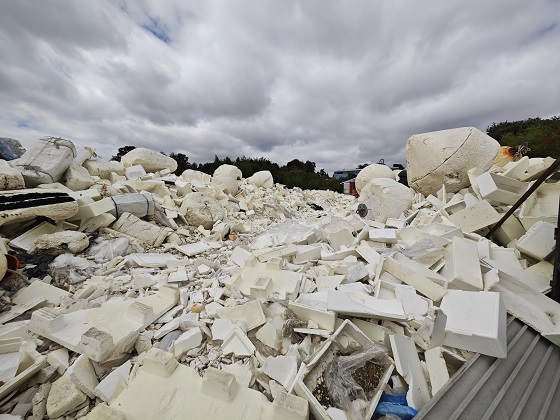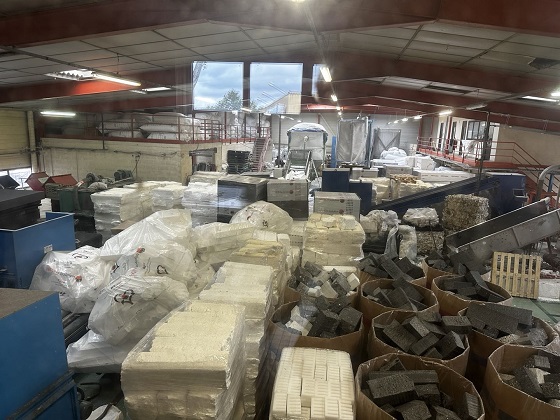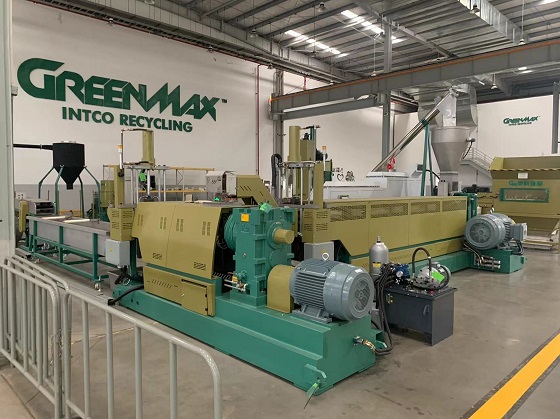How Australian Businesses Can Recycle Packaging Waste
Recycling product packaging waste is critical for your company to improve sustainability initiatives and minimize operational expenses. Product packaging waste not only adds to environmental pollution yet additionally represents a significant financial worry.
In this blog we'll provide actionable tips and methods for your company to properly recycle product packaging waste, lining up with both environmental goals and consumer expectations. By executing these strategies, you can improve waste management processes, reduce your environmental impact, and demonstrate a commitment to sustainability.

What is Packaging Waste?
Packaging waste refers any type of materials utilized to wrap, protect, or contain products during transport, storage, and sale that are eventually discarded. This consists of a variety of materials such as cardboard boxes, cling wrap, foam peanuts, and metal cans. In a company context, packaging waste originates from different sources consisting of the packaging of raw materials, products for retail, and shipping materials.
In 2021 alone, the Australia generated 8.7 million tonnes of packaging waste. This includes both primary product packaging, which directly protects and markets the product, and second product packaging, utilized for bulk handling and transport.
Why Do We Need to Recycle Packaging Waste?
Recycling product packaging waste is important for several factors, impacting not only the environment but also the financial health and reputation of companies.
Environmental Impact: Packaging waste contributes significantly to environmental deterioration. Plastics, for example, can take hundreds of years to decay, causing lasting pollution in land fills and oceans. Recycling product packaging waste assists conserve natural resources and reduces greenhouse gas discharges connected with the manufacturing and disposal of packaging materials.
Financial Implications: Managing packaging waste efficiently can lead to significant cost savings for companies. By recycling waste, company can reduce waste disposal costs and potentially create revenue via recycling programs. Effective waste management practices also often cause lower operational costs by optimizing the use of materials and lowering the need for storage space.
Legal and Regulatory Considerations: Companies should comply with different regulations targeted at reducing packaging waste and promoting recycling. The Packaging Waste Regulations call for companies to take obligation for the waste they generate, making certain that a specific portion of packaging is recycled. Non-compliance can result in hefty fines and legal penalties.
Social Responsibility and Consumer Expectations: Consumers are progressively aware of environmental concerns and expect companies to act responsibly. Companies that demonstrate a commitment to recycling product packaging waste can enhance their brand image, develop client loyalty, and get a competitive edge.

How Can Businesses Recycle Packaging Waste?
Recycling product packaging waste includes multiple strategies. Here are workable steps you can take to recycle your product packaging waste efficiently:
Plastic packaging in the Australia accounts for about 70% of our total plastic waste, making it an important area to deal with in reducing total plastic pollution. Recycling plastic packaging waste is vital for minimizing environmental influence and enhancing sustainability.

Investing in Plastic Granulators
The GREENMAX Rigid Plastic Granulator is a machine that processes rigid plastic raw materials into pellets. It is commonly used in plastics recycling and reuse processes, as well as in the production of new plastic products, and can help to easily achieve recycling and ESG goals!
● Rigid plastic granulator is a kind of equipment to process rigid plastic raw materials into granular form. The working principle generally includes the following steps:
● Feeding: Rigid plastic wastes or raw materials are put into the feeding hopper of the granulator.
● Heating and melting: Through the heating device, the plastic is heated to a molten state.
● Extrusion: The molten plastic is extruded under the push of the screw.
● Pelletizing: The extruded plastic is cut into pellets through the granulator.
● Cooling: The pellets pass through a cooling device to solidify and mold.
● Sieving: The pellets are sorted through a sieving device to remove unqualified pellets.
The exact principle of operation may vary depending on the type and design of the granulator, but the general idea is to convert rigid plastics into pellets through the processes of melting, extruding, pelletizing and cooling. This principle of operation allows the rigid plastic granulator to efficiently process the plastic raw material and produce a pelletized product that meets the requirements. The shape and size of the pellets can be adjusted as needed. The advantages of this equipment include:
● Improving material utilization: processing waste rigid plastics into pellets reduces waste and improves resource utilization.
● Lower production costs: recycling and reusing plastic pellets can reduce raw material costs.
● Strong adaptability: It can process many different types of rigid plastics, such as polyethylene (PE), polypropylene (PP), polystyrene (PS) and so on.
● High production efficiency: high degree of automation, able to produce large quantities of plastic pellets quickly.
Conclusion
For tailored waste management services and support, reach out to GREENMAX Recycling Solutions. Our expertise can help you implement effective waste reduction strategies and achieve your sustainability goals.
